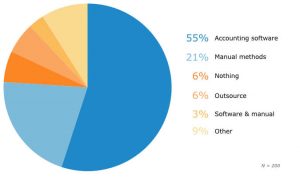 Accounting for the growing cannabis industry is unique. Here’s why.
Accounting for the growing cannabis industry is unique. Here’s why.
The goal of any accounting system is to ensure that accurate financial information is available timely to users. An appropriate system will include processes and procedures for collecting, recording and classifying data and will assist in preventing and detecting waste or, even worse, fraud.
So why is accounting for the growing cannabis industry so unique?
Management, investors and other financial statement users require the same accurate financial information as any other industry. However, in this growing industry, businesses must comply with strict state and federal regulations to avoid substantial penalties or even the risk of losing their business.
Cannabusiness accounting and compliance
Proper and adequate accounting systems and controls are even more critical in a cannabis business where the business “touches the plant.” Growers, processors and distributors have unique accounting and compliance needs unlike any other industry. The potential for large cash transactions and banking restrictions common in the industry further emphasize the need for proper accounting controls and procedures.
As states begin to legalize marijuana for medical and recreational use, businesses will need to consider the unique challenges the industry faces at the onset. The federal government considers business operations in this space to be “trafficking in controlled substances.” As such, proper accounting and reporting should incorporate the nuances of Internal Revenue Code Sec. 280E and 471 relating to cost accounting and inventory. In addition, state regulations require industry tracking and reporting of “seed to sale.” Most states with legalized marijuana industry require businesses to have inventory control and reporting systems in place as well as an interface with state mandated tracking systems. Therefore, the accounting system must provide reports and analysis to support compliance with federal and local regulations.
In this highly regulated environment, the business can be audited at any moment. All records must be available and in order to prove compliance with state and federal regulations. Furthermore, the accounting for businesses in this industry will need to provide for transactions to and from related entities, segment or separate “lines of business” reporting and consolidation. Business structures often include related entity relationships and investments. These advanced accounting issues are uncommon for most young or start-up businesses in other industries.
While many businesses entering the Cannabusiness space are new businesses, they cannot approach their accounting and bookkeeping in a manner often seen with new business start-ups. It’s common for a start-up to lack a proper accounting system and accounting controls before the business is up and running. A Cannabusiness business must have their system and controls in place well before they start operations.
We’ve got your back
Cannabusiness is a developing industry with many complicated factors. If you’re starting a business in this space, don’t go it alone! Contact Managing Partner Maria Rollins at mrollins@krscpas.com or 201.655.7411 to discuss your situation.

 Accounting for the growing cannabis industry is unique. Here’s why.
Accounting for the growing cannabis industry is unique. Here’s why. Determine the health of a business by analyzing its Balance Sheet
Determine the health of a business by analyzing its Balance Sheet Managing partner Maria Rollins was a guest on the Accounting Success podcast, speaking on the topic, “
Managing partner Maria Rollins was a guest on the Accounting Success podcast, speaking on the topic, “





 Making charitable contributions is a great way to reduce your taxable income. The most common type of donation is a monetary contribution. Taxpayers are allowed to make tax deductible monetary contributions to qualified organizations in amounts up to 50% of adjusted gross income.
Making charitable contributions is a great way to reduce your taxable income. The most common type of donation is a monetary contribution. Taxpayers are allowed to make tax deductible monetary contributions to qualified organizations in amounts up to 50% of adjusted gross income.
 How to prepare a budget projection
How to prepare a budget projection If you are familiar with basic accounting and maintain your own set of books, but can’t seem to make sense of the reports your accounting software is producing it may be time to sit down with your accountant. This is a great way to analyze how your business is actually doing. Your accountant is well versed in what your cash flow and finances are comprised of and could be an extremely useful resource when it comes to planning your future, setting goals, and assuring growth.
If you are familiar with basic accounting and maintain your own set of books, but can’t seem to make sense of the reports your accounting software is producing it may be time to sit down with your accountant. This is a great way to analyze how your business is actually doing. Your accountant is well versed in what your cash flow and finances are comprised of and could be an extremely useful resource when it comes to planning your future, setting goals, and assuring growth. Depending upon the version purchased, these packages will offer the user the ability to perform basic bookkeeping functions such as
Depending upon the version purchased, these packages will offer the user the ability to perform basic bookkeeping functions such as Let’s face it, to be called a certified public accountant (CPA) one must have a certain educational background as well as proven knowledge (i.e., by passing a rigorous exam). We believe CPAs have the business acumen that allows them to prepare basic financial reports and tax returns. You may also expect your CPA to fill the role of business consultant to help you achieve certain business and personal results.
Let’s face it, to be called a certified public accountant (CPA) one must have a certain educational background as well as proven knowledge (i.e., by passing a rigorous exam). We believe CPAs have the business acumen that allows them to prepare basic financial reports and tax returns. You may also expect your CPA to fill the role of business consultant to help you achieve certain business and personal results.